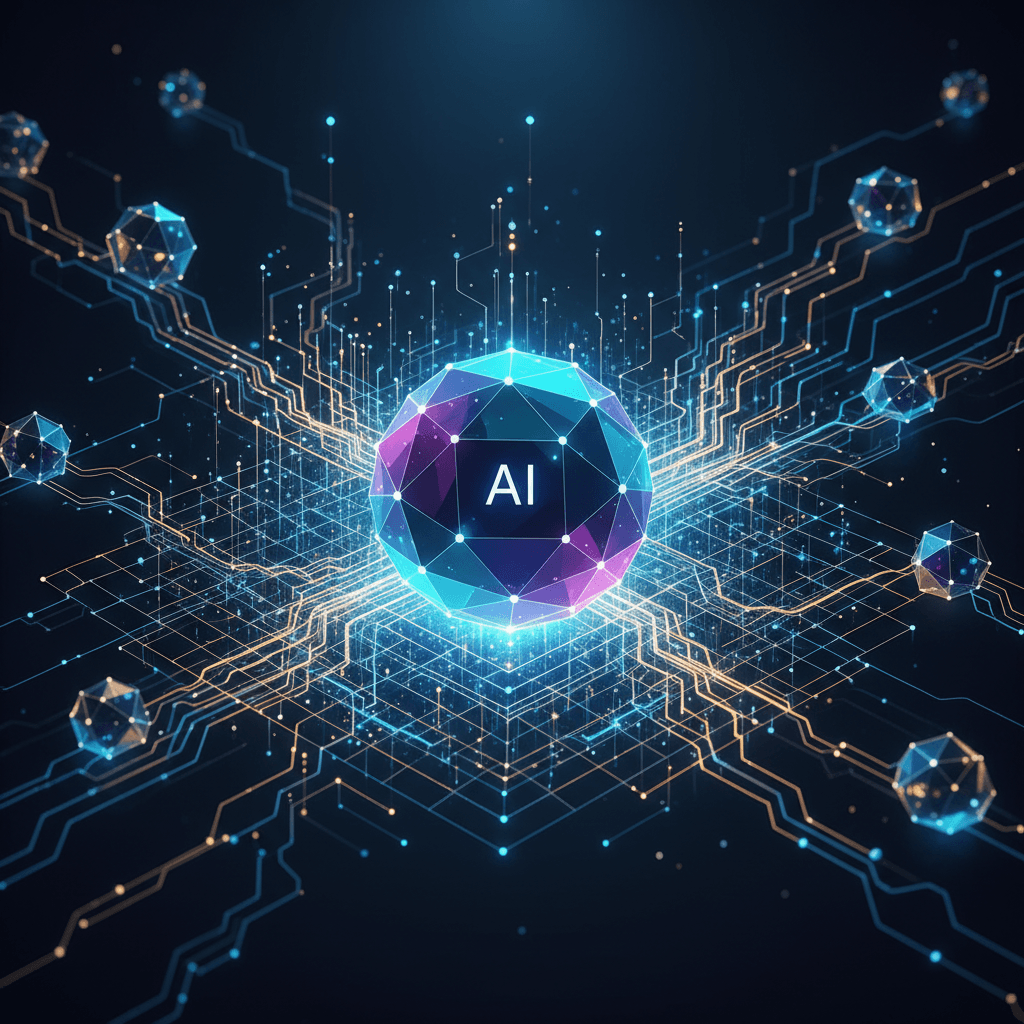Neo4j commits $100M to establish graph databases as AI's essential knowledge layer.
Neo4j’s $100M investment aims to solve AI’s context crisis, empowering agentic systems with vital knowledge and memory.
October 3, 2025

In a significant move to solidify its role in the burgeoning generative AI landscape, graph intelligence platform Neo4j has announced a $100 million investment to expand its capabilities and ecosystem.[1][2][3][4][5] This strategic push is aimed at positioning the company's graph database technology as the essential "knowledge layer" for the next wave of artificial intelligence, particularly for advanced agentic systems.[1][4][5] The investment, drawn from the company's own revenues, will fuel product innovation with two new offerings designed to simplify the creation of AI agents and launch one of the largest startup programs to date, aiming to support 1,000 AI-native companies over the next year.[1][2] This initiative comes as many enterprises struggle to transition their generative AI projects from experimental pilots to production-ready applications, a challenge Neo4j aims to solve by providing the critical context and memory that large language models often lack.[1][4][6]
The core of Neo4j's strategy is to address a critical flaw in many generative AI deployments: the absence of deep, contextual understanding and reliable memory. Citing MIT research that found 95% of AI pilots fail to deliver returns, the company points to this lack of context as a primary culprit.[1][2][4][6] Large language models (LLMs), while powerful, can be prone to hallucination and cannot easily access or reason over an organization's specific, proprietary data. Neo4j's graph databases, which map complex relationships between data points, are designed to serve as a factual foundation, or knowledge graph, for these AI models.[7][8] This approach, often referred to as Retrieval-Augmented Generation (RAG), grounds the AI in verifiable information, providing the persistent memory and contextual reasoning necessary for accurate, explainable, and traceable outputs.[5][6] "Agentic systems are the future of software," said Emil Eifrem, Co-Founder and CEO of Neo4j. "They need contextual reasoning, persistent memory, and accurate, traceable outputs, all of which graph technology is uniquely designed to deliver."[1][4][5] By transforming disconnected data into actionable knowledge, Neo4j seeks to enable enterprises to overcome the pilot-to-production gap and scale AI for real-world use.[1][6]
To execute this vision, the investment will directly fund the launch of two new products aimed at lowering the barrier for developing AI agents. The first, Neo4j Aura Agent, is an offering currently in early access that allows users to build, test, and deploy AI agents that are directly grounded on their own enterprise data.[1][2][5] This platform is intended to simplify development by providing end-to-end automated orchestration and operations for graph-based knowledge retrieval, with general availability expected later in the year.[1][2][5] The second product, the Model Context Protocol (MCP) Server for Neo4j, is designed to integrate graph-based memory and reasoning into existing AI applications.[1][2][5] It supports natural language queries, automated generation of graph data models, and persistent memory, allowing developers to enhance their current AI systems with the power of a knowledge graph.[5][9] These tools directly address common enterprise hurdles like data silos and the shortage of specialized AI expertise.[1][4]
Beyond product development, a substantial portion of the investment is dedicated to fostering a new generation of AI companies through the Neo4j Startup Program.[1] The initiative will support 1,000 AI-native startups over the next 12 months, providing them with cloud credits, technical support, and go-to-market guidance to build and scale their applications using graph technology.[2][3][9] The program has already enrolled over 200 members, including companies like Firework, Rivio, and Zep.[1][2][6] This move signals an effort to build a robust ecosystem around its platform, encouraging innovation from the ground up. The strategy appears to be gaining traction, with Neo4j board director David Klein noting, "Eight out of ten GenAI-native startups I speak with are re-platforming on Neo4j."[2][5][9] Hala Jalwan, Co-Founder and CEO of startup Rivio, highlighted the platform's ability to model the complex relationships in procurement, stating, "Neo4j enables us to model that complexity with the accuracy our customers require."[1][6]
This major strategic reinvestment is backed by strong business performance and market momentum. The company surpassed $200 million in revenue in 2024, providing the financial foundation for the board-approved investment without needing external funding.[1][2][5] This financial health is coupled with significant growth in its AI-related business, including a six-fold increase in GenAI customers and a 58% rise in cloud consumption revenue over the last year.[1][2][3] Neo4j's technology is already in use by 84 of the Fortune 100 companies, with clients like Uber, Walmart, and Klarna leveraging the platform for their agentic deployments.[1][2][3] To support this expansion, the company has also made key leadership changes, promoting Sudhir Hasbe to President and Chief Product Officer and hiring Ajay Singh from Databricks as Head of Global Field Engineering.[1][3][6]
In conclusion, Neo4j's $100 million investment represents a calculated and aggressive push to establish graph technology as a non-negotiable component of the enterprise AI stack. By directly addressing the critical challenges of context, memory, and accuracy that prevent many generative AI projects from succeeding, the company is making a compelling case for the role of knowledge graphs. Through the dual strategy of launching powerful new development tools and cultivating a vast ecosystem of AI-native startups, Neo4j is not just enhancing its own product suite but is aiming to shape the very infrastructure upon which future intelligent systems are built. This move positions the company at the heart of the transition from speculative AI pilots to tangible, production-grade solutions that can deliver measurable business value.